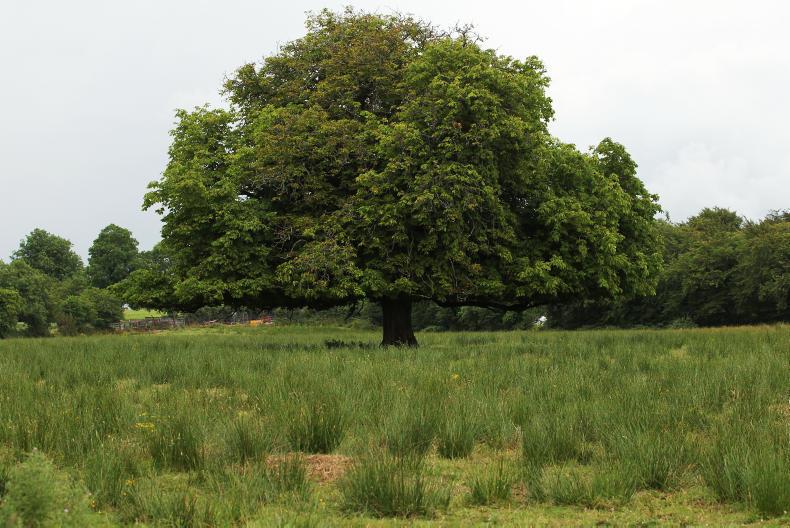The detection of MCPA residues in drinking water supplies continues to give rise for concern.
Last year, the Environmental Protection Agency (EPA) published a Drinking Water Report for Public Water Supplies 2015, which reported 61 schemes affected by pesticide excess in 2015, compared with 28 in 2014. Residues of MCPA were detected in 41 of these supplies. None of the breaches gave rise to any health concerns but they exceeded legal limits.
The legally permissible limit for MCPA and other pesticides is effectively zero (1 part in 10bn), and is so low that a single drop or foil seal from a pesticide container could potentially cause an excess along a small stream for a distance of 30km. While the increased trend of detections in recent years may be partly due to the more thorough monitoring that is now required, the data reflects the extensive use of pesticides in circumstances where they can get into watercourses.
Plan protection products
Farmers are not exclusive users of plant protection products (consider gardeners, amenity/landscape users, golf clubs etc), but information from the catchments which figured prominently in follow-up investigations in 2015 and 2016 suggests that use by farmers was the most likely source, in particular with respect to detections of MCPA.
MCPA is the active substance in a number of herbicides predominantly used by grassland farmers to control rushes. In many locations the problem with rushes will have been exacerbated by the recent sequence of wet summers which has further restricted control opportunities. Given the very low level of contamination which can result in a breach, it is essential that the very highest of standards are employed by all individuals applying MCPA products. The above guidelines should be noted and acted upon by all users of plant protection products in order to ensure the quality of Irish water courses and to reduce, in particular, the levels of MCPA detected.
Guidelines
Always read and follow label instructions.Be aware of the location of nearby water bodies and their proximity to the intended treatment area. A buffer zone of 5m from watercourses must be maintained when spraying MCPA-based products.Find out the location of any nearby drinking water abstraction points and ensure compliance with safeguard zones.Ensure application equipment is properly maintained and calibrated.Never fill sprayers directly from a watercourse.Perform chemical handling operations well away from watercourses and drains.Take great care to avoid spills.Minimise water volumes (rain and washings) on handling area.Do not spray if the grass is wet or if heavy rain is forecast within 48 hours after application.Do not spray during windy conditions.Clean and wash down sprayer after use.Farmers should be aware that if they fail to adhere to the code of Good Plant Protection Practice (GPPP), in many cases it is their own drinking water supply they are contaminating.
The detection of MCPA residues in drinking water supplies continues to give rise for concern.
Last year, the Environmental Protection Agency (EPA) published a Drinking Water Report for Public Water Supplies 2015, which reported 61 schemes affected by pesticide excess in 2015, compared with 28 in 2014. Residues of MCPA were detected in 41 of these supplies. None of the breaches gave rise to any health concerns but they exceeded legal limits.
The legally permissible limit for MCPA and other pesticides is effectively zero (1 part in 10bn), and is so low that a single drop or foil seal from a pesticide container could potentially cause an excess along a small stream for a distance of 30km. While the increased trend of detections in recent years may be partly due to the more thorough monitoring that is now required, the data reflects the extensive use of pesticides in circumstances where they can get into watercourses.
Plan protection products
Farmers are not exclusive users of plant protection products (consider gardeners, amenity/landscape users, golf clubs etc), but information from the catchments which figured prominently in follow-up investigations in 2015 and 2016 suggests that use by farmers was the most likely source, in particular with respect to detections of MCPA.
MCPA is the active substance in a number of herbicides predominantly used by grassland farmers to control rushes. In many locations the problem with rushes will have been exacerbated by the recent sequence of wet summers which has further restricted control opportunities. Given the very low level of contamination which can result in a breach, it is essential that the very highest of standards are employed by all individuals applying MCPA products. The above guidelines should be noted and acted upon by all users of plant protection products in order to ensure the quality of Irish water courses and to reduce, in particular, the levels of MCPA detected.
Guidelines
Always read and follow label instructions.Be aware of the location of nearby water bodies and their proximity to the intended treatment area. A buffer zone of 5m from watercourses must be maintained when spraying MCPA-based products.Find out the location of any nearby drinking water abstraction points and ensure compliance with safeguard zones.Ensure application equipment is properly maintained and calibrated.Never fill sprayers directly from a watercourse.Perform chemical handling operations well away from watercourses and drains.Take great care to avoid spills.Minimise water volumes (rain and washings) on handling area.Do not spray if the grass is wet or if heavy rain is forecast within 48 hours after application.Do not spray during windy conditions.Clean and wash down sprayer after use.Farmers should be aware that if they fail to adhere to the code of Good Plant Protection Practice (GPPP), in many cases it is their own drinking water supply they are contaminating.






 This is a subscriber-only article
This is a subscriber-only article










SHARING OPTIONS: